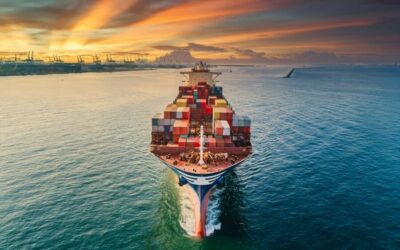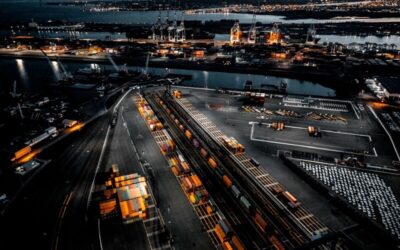Top 3 Trends facing the F&B cold chain industry
Also published on Logistics MiddleEast
In recent years, the food industry has faced a number of exciting and dramatic changes to its supply chain, fueled mostly by shifting consumer demands. Consumers are increasingly focused on the food retailer’s transparency which includes foods that generally require temperature controlled storage through the supply chain.
From the deployment of automation and robotics in warehouses to new innovative ways to manage energy, ideas that were once confined to brainstorming sessions and office whiteboards are now getting the significant investment they need to be deployed in the supply chain.
So what innovations and trends are poised to have the greatest impact on our industry in the next three to five years
- Digital twin – Data becomes insight
- The Amazon effect
- E-commerce drive change

Digital Twin – Where Data becomes insight
Cold chain is already greatly benefiting from the power of data analytics, artificial intelligence and deep learning, which can quickly and accurately collect data from multiple sources and then convert that information into actionable knowledge. Further utilizing application from the IOT revolution, one can get a complete view of operations and the extended logistics chain, enabling more precise control over the environment.
For example, if your whole supply chain has a digital twin, we can ensure and maintain a level of temperature control and efficiency that is unmatched in the industry – the incumbent can analyze shipment conditions during transportation of perishable and other commodities that are sensitive to temperature, humidity and other environmental conditions. While oceans voyages are fairly stable when reefer containers are used, the other “legs”of the journey – or what happens from the farm to the vessels, and once the commodity is off-loaded from the vessel to the importer’s warehouse or even the distributor – are the most vulnerable.
Amazon effect
The market continues to demand faster velocity, better service and greater efficiency. Leading supply chain providers must deploy systems that can provide clients with product visibility and control in near real time.
A chain is only as strong as its weakest link, as the saying goes, is especially appropriate in the supply chain industry. We must keep precise delivery windows with our ocean carrier, freight forwarder, trucking partners, both inbound and outbound, and ensure we leave a customer’s product in the same condition we received it.
Old freight forwarders who have not evolved and still prefer doing things the old way will have to step aside and let themselves be disrupted by new players who understand the technology that brings speed and visibility to help develop SLA windows and the ability to serve customers faster and better.
Ecommerce revolutions drive innovation upstream
Regional players like Carrefour, Spinneys and Union Co-operative have hopped on the e-commerce bandwagon with Souq Supermarket – https://supermarket.souq.com/ae-en/ and some have established their own delivery channels esp in the grocery store and convenience store category. This trend signals a change in consumer preference which has created a ripple effect in the retail supply chain.
Also Read: Importing Food Into Dubai: A Step-By-Step Guide
For 3PLS, many are experiencing delivery requirements within hours instead of days or weeks. This had led to a rise in retail standards around velocity and on-time movement of goods particularly in perishables where time is of the essence. 3Pls are also adapting their service offering whether its repacking larger cartons into smaller packages, offering promotional labeling and etc.

As for warehouse and fulfillment design – Proliferation in food and beverage for fresh food, gluten-free and farm-to-table preferences cascade into warehouse operations. As the number of SKU’s increases, it affects the profile of orders and increases the number of lines. Greater precision is required in how the capacity inside the warehouse is used to manage an expanding product line.
Those fulfillment needs to translate into new requirements for technology in terms of visibility and traceability to handle the complexities.





